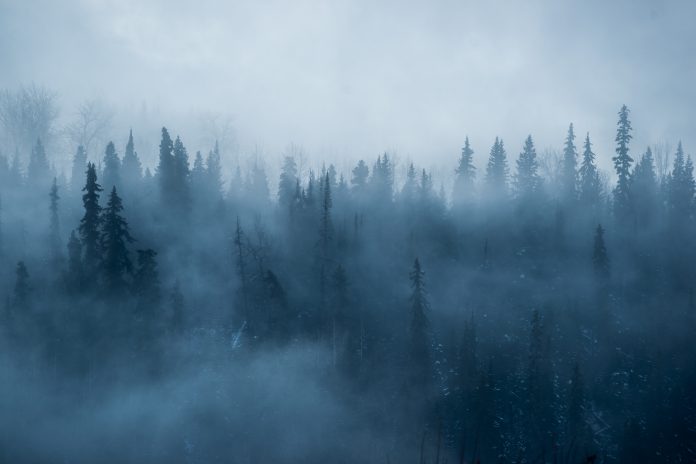Northern Arizona University researchers have drawn attention to the rising temperatures that are causing Earths coldest forests to shift northward
Concerns surrounding biodiversity, increased risk of wildfires and mounting impacts of climate change on northern communities have been raised.
Assistant research professor in the School of Informatics, Computing, and Cyber Systems (SICCS) Logan Berner, and Scott Goetz, Regents’ professor and director of the GEODE Lab, are the lead authors of the article, “Satellite observations document trends consistent with a boreal forest biome shift,” which explores these dangers.
According to said research, the boreal forest which accounts for almost a quarter of the Earths forest is the coldest forest biome yet it is also the most rapidly warming area too. Stretching nearly 9,000 miles the cold-tolerant conifer trees have been studied in dept, by a research team who used 40 years of satellite observations and various geospatial climate-related datasets to assess where and why vegetation greened and browed over the last few decades.
“Greening” indicates higher rates of vegetation growth, which can happen when climate warming promotes the growth of trees and shrubs, as was observed near the arctic and alpine tree lines. “Browning” indicates lower rates of vegetation growth and potentially vegetation death, such as when hotter and drier conditions suppress tree growth and kill trees.
“There is emerging evidence that climate change is causing boreal trees and shrubs to expand into arctic and alpine tundra, while at the same time causing trees to become more stressed and die along the warm southern margins of the boreal forest,” Author Logan Berner said. “These dynamics could lead to a gradual northward shift in the geographic extent of the boreal forest biome, but the extent to which such changes are already underway has remained unclear.”
Unsurprising results
Through their analysis, the team saw that vegetation became greener across much of the cold northern margins of the boreal forest leading to increased vegetation growth and the expansion of trees and shrubs into arctic and alpine tundra. However, along with this increased growth, vegetation also became browner along parts of the warm southern margins of this biome – due to the hotter and drier conditions increasing tree stress and death.
“The boreal forest ecosystem is changing in many ways over recent decades, and those changes are often linked with increasing fire disturbance,” author Scott Goetz said. “Here we intentionally focused on areas that were not recently disturbed by fire so we could tease out the effect of climate change. Our hypotheses about what would happen were verified by this analysis—forests are getting more productive in the cooler northern and higher elevation areas, and they’re getting less productive as a result of hot air masses and drying in the warmer and more southerly areas. We fully expect that will continue and probably intensify in the years to come.”
What a changing biome means for the forest
Shifting vegetation numbers can have an effect on both plant and animal biodiversity, with certain species relying on specific plants. Species like the caribou and moose have niche foraging preferences and are critical sources of food for communities in the boreal-tundra ecotone,
These changes in vegetation along both the northern and southern margins of the boreal forest will impact wildfire regimes, likely increasing the risk of more and severe fires and also impacting the stability of carbon-rich permafrost soils and the absorption of solar energy by the land surface in ways that could accelerate climate warming. Moreover, increasing tree mortality could have widespread implications for forest products while also leading to further degradation of semi-continuous and sporadic permafrost.
These future effects are not limited to the area around the forest.
“Fundamentally, greenhouse gas emissions from human activities are causing Earth’s climate to warm, which in turn is leading the boreal forest to shift northward, as well as impacting other ecosystems across the planet” Berner said. “To minimise adverse impacts of climate change, efforts are needed to dramatically reduce greenhouse gas emissions, especially related to fossil fuel consumption and deforestation. Furthermore, northern communities need to plan for potential changes in vegetation that could impact resource availability (e.g. wildlife, timber) and wildfire risk.”











